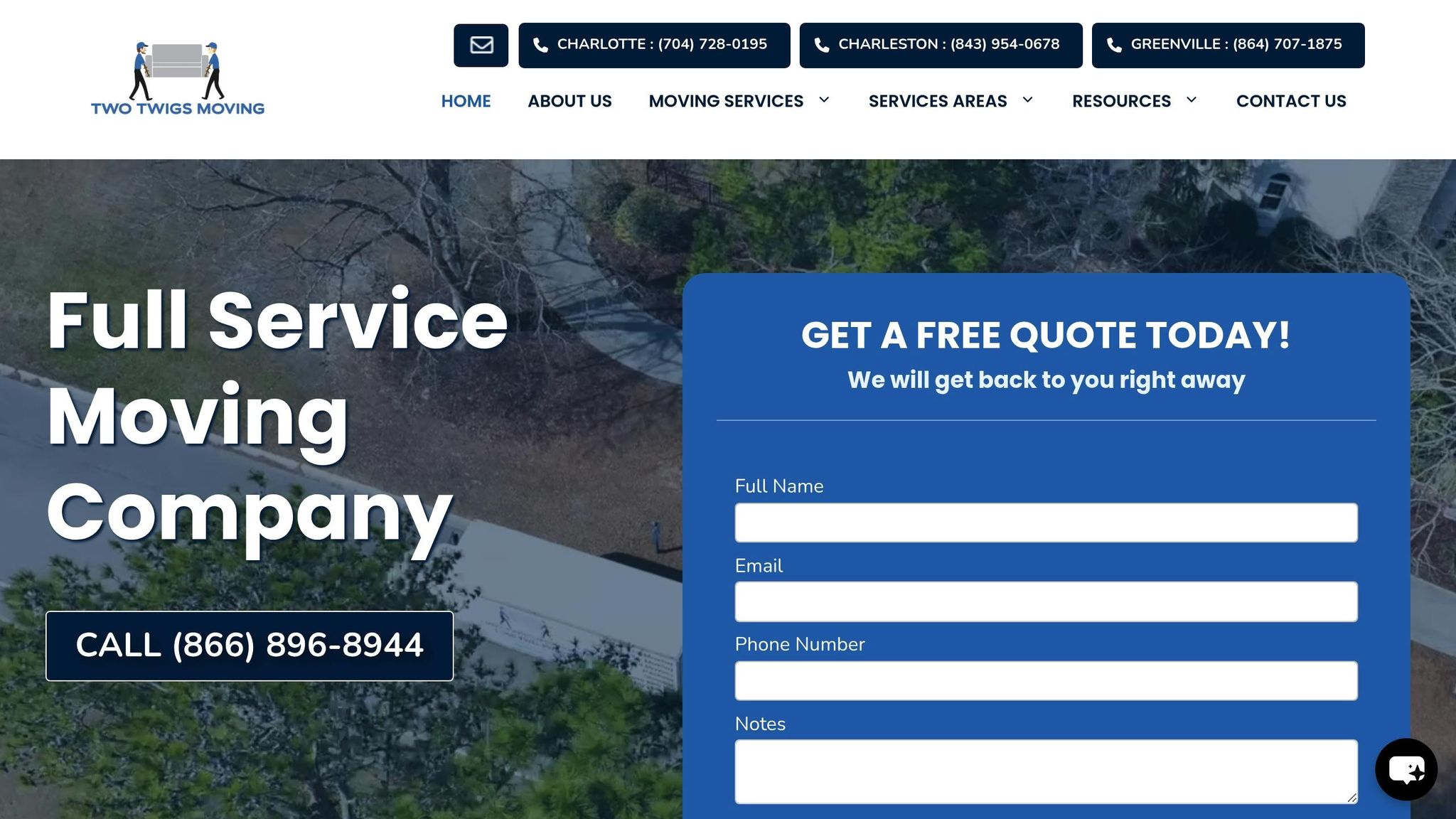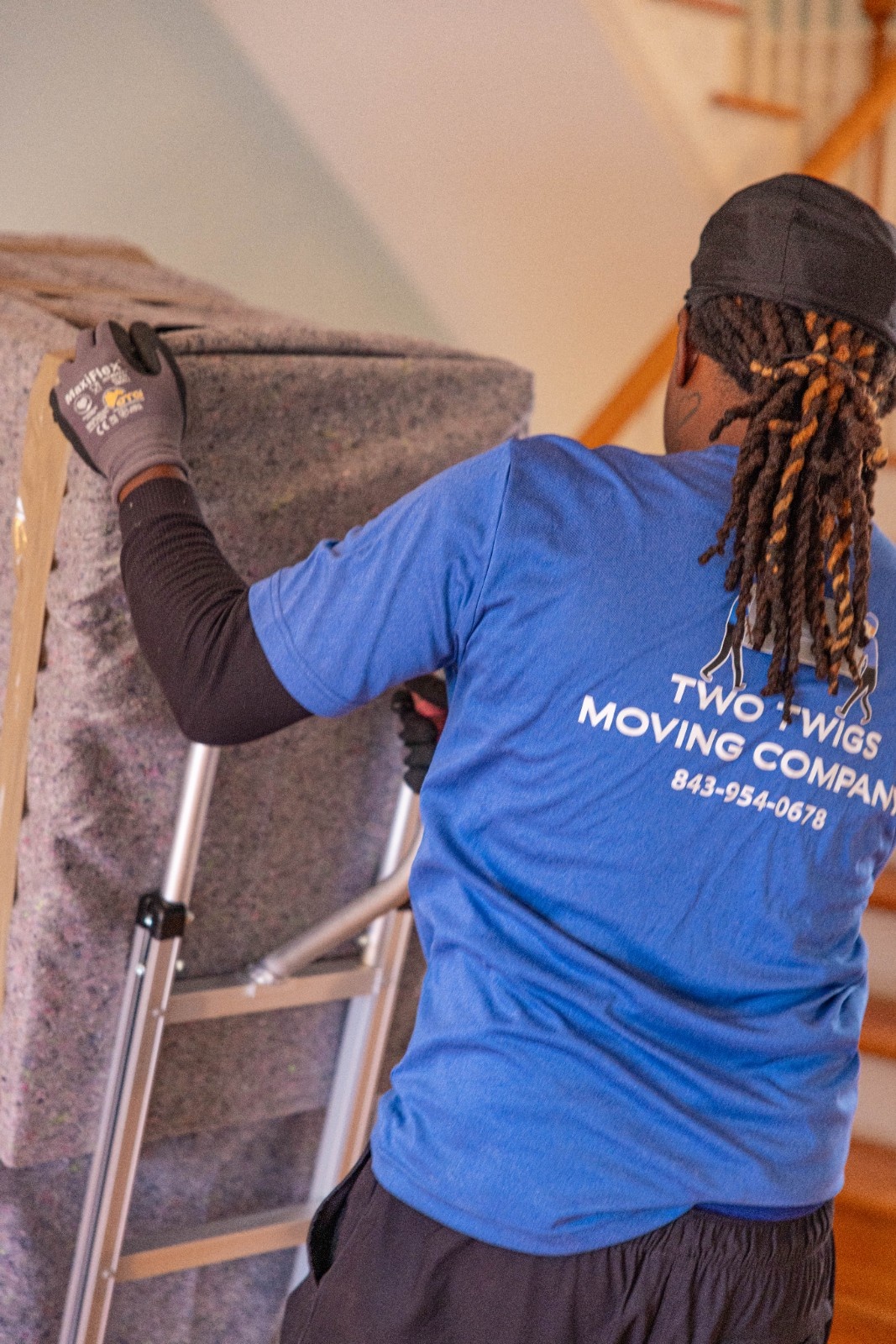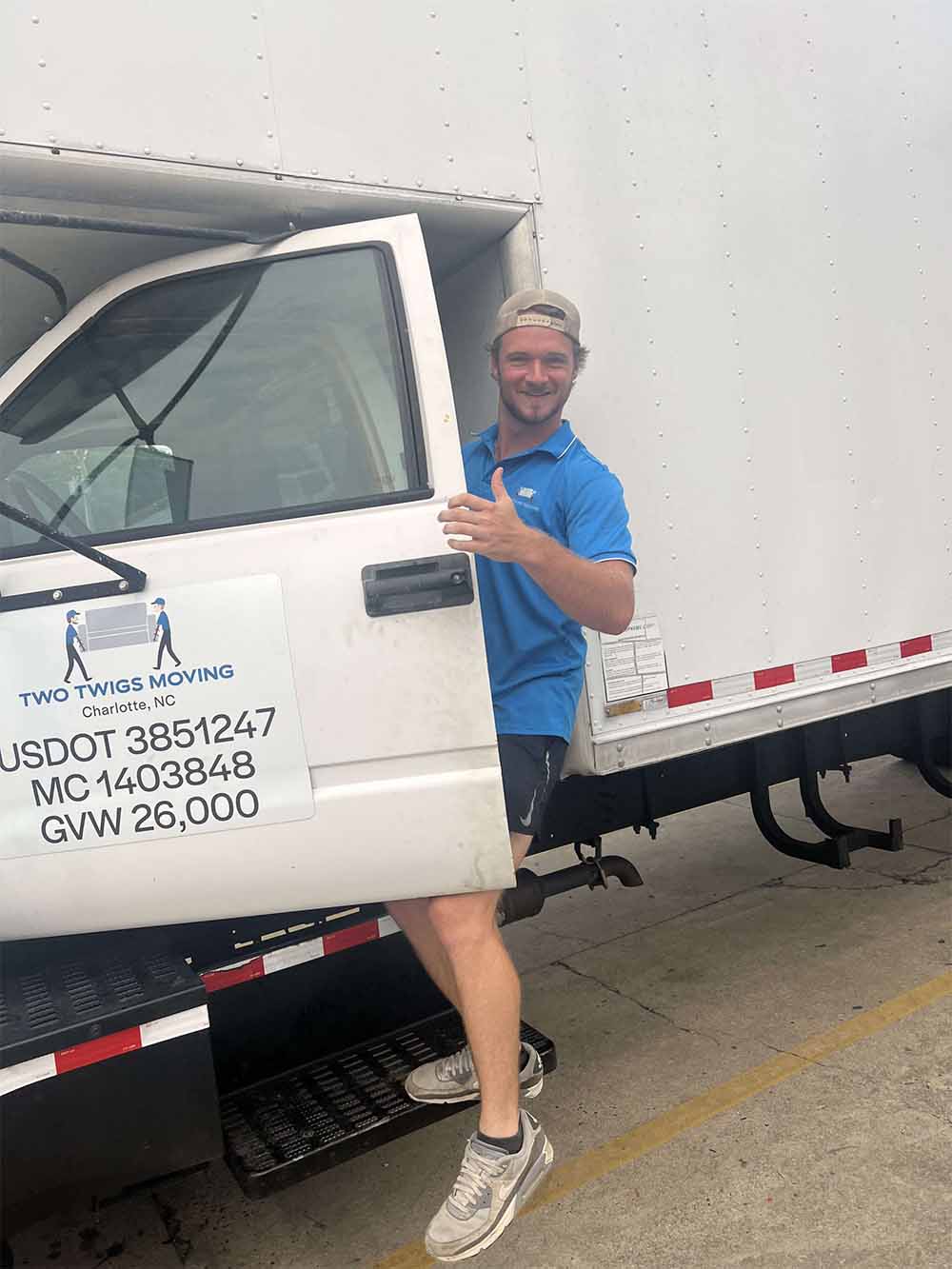Pianos are fragile instruments that react to changes in temperature and humidity. Without climate-controlled moving, they can suffer tuning issues, wood damage, and compromised sound quality. Here’s why climate control is crucial:
- Temperature and Humidity Sensitivity: Wood, felt, metal, and glue in pianos expand or contract with changes, causing cracks, swelling, and rust.
- Tuning Instability: Fluctuations can throw pianos out of tune, with pitch shifts occurring in extreme conditions.
- Structural Damage: Heat or moisture can weaken glue joints, warp wood, and damage finishes.
- Professional Care: Movers use climate-controlled trucks, maintaining 55–70°F and 40–50% humidity to protect the piano.
Proper handling and climate control ensure your piano stays in top condition during a move, preserving its performance and value.
Damage That Happens Without Climate Control
Transporting a piano in regular trucks or trailers without temperature and humidity control can lead to serious damage. These vehicles expose pianos to extreme temperature swings – rising above 90°F in summer and dropping below freezing in winter. Unlike climate-controlled options, these conditions cause rapid and cumulative harm. The damage isn’t just cosmetic; it directly affects the piano’s performance, tuning stability, and overall lifespan. These harsh environments can trigger a series of detrimental changes to the piano’s tuning, structure, and finish.
Tuning Problems and Sound Changes
When climate conditions are uncontrolled, tuning stability becomes an immediate issue. Temperatures exceeding 80°F can throw a piano out of tune in no time, while extremes – above 90°F or with humidity below 35% – can cause pitch shifts of up to a semi-tone in just a few days. Humidity changes also impact the soundboard and other wooden parts, altering string tension and leading to ongoing tuning problems. High humidity causes wood to swell, resulting in muffled tones and reduced responsiveness.
Wood Warping, Cracking, and Swelling
The wooden components of a piano are particularly sensitive to environmental changes during transport. Extreme heat dries out the wood, leading to cracks and splits, while low humidity causes the wood to shrink, creating gaps and permanent damage to critical parts like the soundboard and pinblock. Rapid temperature fluctuations can simultaneously harm multiple wooden components – such as the soundboard, bridges, pins, strings, and veneers – creating internal stress that leads to warping or cracking. On the other hand, high humidity makes the wood swell, which can result in sticking keys, sluggish movement, and pressure on glued joints that may eventually separate.
Problems with Felt, Glue, and Finish
Extreme climate conditions can also wreak havoc on a piano’s delicate components. Heat dries out the felt, making it brittle, while fluctuations in humidity cause expansion and contraction that disrupt the hammer action. Excessive heat can soften glue and damage the finish, leading to issues like fading, cracking, or bubbling. Low humidity can loosen ivory or plastic key tops, and shrinking wood can cause veneers to split. Meanwhile, high humidity fosters corrosion on metal parts such as strings and tuning pins, and it can even encourage mold growth – posing risks to both the piano’s structure and health conditions. Prolonged exposure to high humidity can severely compromise the appearance and functionality of metal components, making corrosion a major concern.
How Climate Control Prevents Piano Damage
Using climate-controlled systems during a move protects pianos from the damaging effects of temperature and humidity changes. These systems create stable conditions that guard against expansion, contraction, and moisture-related harm. By precisely managing temperature and humidity, they help prevent tuning issues, structural damage, and deterioration of components. Combined with specialized handling methods, climate control ensures that pianos are safeguarded throughout the entire moving process. Let’s explore how maintaining precise climate settings protects each part of a piano.
Maintaining 55–70°F and 40–50% Humidity
Professional movers rely on climate-controlled environments, maintaining temperatures between 55–70°F and humidity levels between 40–50%, to protect a piano’s delicate materials.
"Pianos are ‘happiest’ in atmospheric conditions in which people feel comfortable i.e. not too high or low relative humidity or extreme temperatures." – Forsyth Music Shop
This controlled environment prevents stress on the wood, felt, and glue components, which can expand or contract with fluctuating humidity. For instance, the wooden soundboard and internal structure are prone to absorbing and releasing moisture due to their natural properties. Keeping humidity within the ideal range helps these components retain their shape and stability.
To maintain these conditions, climate-controlled trucks are equipped with dual heating and cooling zones, humidity monitors, and air circulation systems. Companies like Two Twigs Moving use specially designed trucks to ensure sensitive instruments like pianos are transported in an optimal environment.
Avoiding Sudden Temperature and Moisture Changes
Gradual climate control is key to avoiding the thermal shock and rapid moisture changes that can cause irreversible damage to a piano. Extreme humidity levels – below 30% or above 70% – are particularly harmful. Studies show that 60% of piano problems arise from environmental fluctuations.
"Pianos’ unique characteristics make them highly sensitive to changes in climate, temperature, and humidity. Fluctuating environmental conditions can negatively impact your instrument’s sound quality, tuning stability, and overall structural integrity." – Gordon Bolton, Professional Moving Specialist
Sudden shifts in temperature or humidity can cause the wood to expand or contract too quickly, leading to cracks or warping. For example, the pinblock, which holds the tuning pins in place, can become warped, resulting in tuning instability that persists even after the move. Climate-controlled systems maintain steady conditions to prevent these issues, shielding the piano’s delicate felt, cloth, and precision wood parts from rapid moisture changes. This ensures the piano retains its responsiveness and tonal quality.
Proper Padding and Preparation Methods
In addition to climate control, professional movers use specialized padding and preparation techniques to fully protect pianos during transport. Proper padding minimizes physical shocks, while climate regulation prevents environmental damage.
Climate-controlled trucks are outfitted with padded blankets, custom straps, and specific loading and unloading procedures designed for pianos. Movers also prepare the instrument carefully before loading and allow it to acclimate gradually when transitioning between different climate zones. This step-by-step approach ensures the piano is protected both physically and environmentally.
Suspension systems in these trucks absorb vibrations and physical shocks, while climate control maintains stable conditions to prevent material degradation. Together, these methods address both immediate risks, like jolts during transport, and long-term threats, such as environmental wear and tear.
To further enhance protection, air circulation systems within climate-controlled trucks ensure even temperature and humidity distribution. This prevents hot or cold spots, providing consistent environmental protection for the entire piano throughout the move.
What to Look for in Piano Moving Services
Moving a piano isn’t just about strength – it requires specialized tools and expert knowledge to ensure your instrument stays safe. Unfortunately, not all moving companies are equipped to handle the unique challenges of piano transport, leaving your piano vulnerable to damage from shocks or environmental changes.
Trucks with Temperature and Humidity Control
Maintaining stable conditions during transit is critical for protecting your piano. Look for trucks that can consistently regulate temperatures between 55–70°F and humidity levels of 45–55%. Without these controls, even a short trip can harm your piano’s delicate components, leading to lasting damage. Experts agree that stable conditions are key to preserving your instrument’s integrity.
Specialized moving trucks are designed to keep the environment consistent, often using real-time monitoring systems to adjust temperature and humidity as needed. These trucks are also equipped with air-ride suspension, carpeted padding, and soft-tread tires to minimize vibrations and shocks. Hydraulic tailgate lifts allow for smooth loading and unloading, while custom blankets and padding protect the piano’s finish and internal components from scratches or impacts.
Movers Trained in Piano Transport
Moving a piano is far more intricate than relocating standard furniture. A grand piano, for instance, contains thousands of sensitive parts that require careful handling. Professional piano movers undergo specialized training to safely disassemble, pack, and transport these instruments. This includes learning proper lifting techniques, using protective materials, and building custom crates to secure each piece.
Experienced movers also excel at navigating tricky spaces, like tight staircases, narrow doorways, and sharp corners, all while minimizing the risk of damage. In contrast, hiring untrained movers can lead to costly repairs – or worse, permanent harm to your piano.
Service Options for Different Moving Needs
Every piano move is unique, so flexibility in service options is essential. High-quality piano moving services should offer solutions for everything from simple local moves to complex long-distance relocations that may require storage. Options often include:
- Partial disassembly: Around $100.
- Full crating: Between $800 and $1,200.
- Hoisting services: $750–$1,000.
- Climate-controlled storage: $50–$75 per month.
- Re-tuning services: Typically $100–$150.
If your piano needs to be stored temporarily, climate-controlled storage is a must. These facilities maintain the same protective conditions as the moving trucks, shielding your instrument from environmental damage. After the move, re-tuning is recommended since even careful transport can affect your piano’s sound.
For vintage or antique pianos, some companies offer white-glove service. This includes specialized equipment and highly trained movers who understand the care required for valuable, fragile instruments. Look for companies that provide flat-fee pricing instead of hourly rates to avoid surprises. Additionally, consider purchasing extra insurance – usually about $10–$15 per $1,000 of value – for added peace of mind.
When selecting a piano moving service, prioritize those that offer the specialized care, equipment, and options tailored to your instrument’s needs. A trusted service ensures your piano arrives safely, ready to fill your space with music once again.
sbb-itb-a5538b6
Piano Moving in Charlotte, Charleston, and Greenville
The Carolinas bring unique challenges for piano owners due to high humidity and dramatic temperature swings. These environmental factors can pose serious risks to pianos during transport if proper climate control measures aren’t in place.
High Humidity and Temperature Changes in the Carolinas
Cities like Charlotte, Charleston, and Greenville experience elevated humidity and seasonal extremes that can wreak havoc on a piano’s delicate construction. When humidity exceeds the safe range of 40–50%, wooden components swell, causing sticking keys, muffled sound, and even mold. On the flip side, low humidity can dry out the wood, leading to cracks, tuning instability, and unresponsive keys.
Temperature changes add another layer of complexity. Hot summers in the Carolinas can soften glue and fade finishes, while cold weather may weaken glue joints and stiffen moving parts. Rapid transitions between indoor and outdoor temperatures can inflict immediate, sometimes irreversible, damage. With a 27% increase in heavy rainstorms in the Southeast since 1958, managing humidity during piano moves has become even more critical. These challenges highlight the need for specialized services to protect pianos in this region.
Two Twigs Moving‘s Piano Moving Services

Two Twigs Moving is prepared to tackle the specific climate challenges of Charlotte, Charleston, and Greenville. Their climate-controlled trucks maintain a consistent environment throughout the move, directly addressing the humidity and temperature swings common in the Carolinas. This ensures your piano is protected from environmental risks, keeping conditions aligned with industry standards for piano preservation.
Their process includes precise padding and preparation techniques tailored to climate-controlled transport. This approach not only shields the piano from physical shocks but also safeguards it from harmful environmental changes. With real-time monitoring of temperature and humidity during transit, adjustments can be made on the spot to maintain ideal conditions.
For piano owners in these cities, Two Twigs Moving offers customizable service packages designed to meet the specific needs of each location. After the move, it’s advised to let your piano acclimate to its new environment for two to three weeks before scheduling a tuning. This adjustment period allows the instrument to settle gradually, minimizing the risk of damage from sudden environmental changes.
Protecting Your Piano Investment
Your piano isn’t just a musical instrument; it’s a significant investment that deserves proper care, especially during a move. Using climate-controlled moving services is one of the best ways to preserve its condition and value. But safeguarding your piano goes beyond just the move itself. Let’s take a closer look at how careful handling and attention to detail can ensure your piano remains in top shape for years to come.
Keeping Your Piano in Good Condition Long-Term
Professional climate-controlled moving is essential for protecting your piano’s delicate components. Maintaining temperatures between 55–75°F and humidity levels of 40–60% is key to preventing damage.
"Climate-controlled storage helps preserve the piano’s wood, felt, and metal components by preventing extremes. This kind of storage ensures the instrument stays in top shape, minimizes the risk of damage, and maintains its value and sound quality over time." – Piano Movers of Texas
Why is this important? Fluctuations in temperature and humidity can cause the wood to crack or swell, affect the felt and strings, and lead to tuning instability. Over time, these issues not only impact the sound quality but also reduce the piano’s market value. By keeping environmental conditions stable, you’re not just maintaining the piano’s performance – you’re also protecting its long-term worth.
Choosing Experienced Piano Movers
While climate control is crucial, the expertise of the people handling your piano is just as important. Hiring professional movers, such as Two Twigs Moving, ensures your piano is treated with the care it demands. Experienced movers are trained to handle instruments of all sizes and complexities, navigating tight spaces, stairs, and other challenges without putting your piano – or your home – at risk.
These professionals rely on specialized equipment and techniques to ensure safe transport. They also offer insurance and liability coverage, giving you peace of mind throughout the relocation process.
When evaluating piano movers, ask about their experience with climate-controlled transport, request references, and confirm that they use the right tools and carry proper insurance. Investing in skilled professionals guarantees your piano’s physical and financial integrity during the move.
FAQs
How do professional movers protect a piano during a climate-controlled move?
When relocating a piano, professional movers take extra steps to ensure it remains well-protected, especially during a climate-controlled move. They rely on temperature-regulated vehicles to shield the piano from extreme heat, cold, or humidity – conditions that could harm its wood and delicate internal parts. To prevent physical damage during transit, movers also use thick padding and secure straps to keep the piano stable and safe.
Once the piano reaches its new home, it may need some time to adjust to the environment. Factors like temperature and humidity can affect its sound and structure, so a post-move tuning is often recommended to bring its sound back to its best. These precautions work together to keep your piano in top shape throughout the journey.
How should I prepare my piano for a move to protect it from temperature and humidity changes?
To keep your piano safe during a move, start by maintaining a stable environment before transit. Aim for a temperature range of 65-75°F and consistent humidity levels. Fluctuations in temperature or moisture can lead to warped wood, damage to internal parts, or even a dulled finish.
When it’s time to move, cover the piano with protective padding or blankets to shield it from sunlight, cold drafts, or extreme heat. If possible, choose climate-controlled transportation to keep conditions steady during the journey. These steps will help preserve your piano’s condition, ensuring it continues to produce beautiful music in its new home.
Why should a piano adjust to its new environment after being moved, and how long does this take?
Pianos are delicate instruments that react strongly to shifts in temperature and humidity. These changes can make the wood and other components expand or contract, potentially causing tuning problems or even structural issues. Giving your piano time to adjust to its new environment is essential to ensure stability before making any tuning or adjustments.
This adjustment period usually lasts about 2 to 3 weeks. During this time, the piano gradually adapts to the room’s conditions, which helps preserve its sound quality and overall durability. Once the acclimation is complete, it’s a good idea to schedule a tuning to keep it performing at its peak.


.svg)


